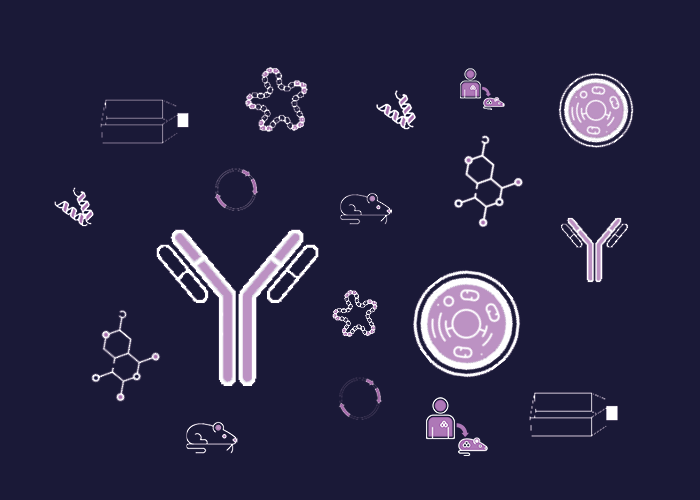
Cat. #161917
SK-MEL-28 Cell Line
Cat. #: 161917
Availability: 8-10 weeks
Organism: Human
Tissue: Skin
Model: Tumourigenic
£575.00
This fee is applicable only for non-profit organisations. If you are a for-profit organisation or a researcher working on commercially-sponsored academic research, you will need to contact our licensing team for a commercial use license.
Contributor
Inventor: Lloyd J. Old, Toshitada Takahashi
Institute: Memorial Sloan-Kettering Cancer Center (MSK)
Primary Citation: Carey et al. 1976. Proceedings of the National Academy of Sciences. 73: 3278-3282. PMID: 1067619.
Tool Details
*FOR RESEARCH USE ONLY (for other uses, please contact the licensing team)
- Name: SK-MEL-28 Cell Line
- Cancer type: Skin cancer
- Organism: Human
- Gender: Male
- Tissue: Skin
- Donor: This cell line was established from an axillary lymph node of a 51-year-old male of unknown ethnicity.
- Morphology: Polygonal
- Growth properties: Adherent
- Model: Tumourigenic
- Model description: Tumourigenic in nude mice; forms malignant melanoma (large round cell type)
- Products or characteristics of interest: Karyotype: modal number = 90; range = 81 to 96. This is a hypotetraploid human cell line with the modal chromosome number of 90, occurring in 50% of cells. The rate of cells with a higher ploidy was 3.6%. This cell line has a very complex karyotype. There were 18 or more marker chromosomes that were common to most cells. Markers der(1)t(1;2) (p36.1;q21), del(1) (q2101) and several others had two copies per cell and t(2p14q), t(3q7p) and others had a single copy per cell. The Y/autosome translocation marker was identified as der(20)t(Y;20) (q11.23;q13.3) and had two copies per cell. The inclusion of a short segment of the euchromatic Yq11.23 was confirmed by the Southern blot DNA analysis. There were two normal X chromosomes per cell; Normal Y, N1 and N11 were absent; N19 had five or more copies per cell. Isoenzymes: AK-1, 1-2; ES-D, 1; G6PD, B; GLO-I, 2; PGM1, 1; PGM3, 1
- Description: SK-MEL-28 is one of a series of melanoma cell lines established from patient-derived tumour samples. This cell line expresses mutant B-Raf (V600E) and wildtype N-Ras. It is also able to form tumours in nude mice.
- Application: 3D cell culture; High-throughput screening; Toxicology
- Biosafety level: 1
Target Details
- Target: Antigen expression: Blood Type A; Rh+; HLA A11, A26, B40, DRw4
Applications
- Application: 3D cell culture; High-throughput screening; Toxicology
Handling
- Growth medium: EMEM supplemented with FBS to a final concentration of 10%
- Temperature: 37° C
- Atmosphere: 5% CO2 in air
- Shipping conditions: Dry Ice
- Storage medium: Complete growth medium supplemented with 5% (v/v) DMSO
- Storage conditions: Vapor phase of liquid nitrogen
- Subculture routine: Remove and discard culture medium. Briefly rinse the cell layer with 0.25% (w/v) Trypsin- 0.53 mM EDTA solution to remove all traces of serum that contains trypsin inhibitor. Add 2.0 to 3.0 mL of Trypsin-EDTA solution to flask and observe cells under an inverted microscope until cell layer is dispersed (usually within 5 to 15 minutes). Note: To avoid clumping do not agitate the cells by hitting or shaking
- Str profiling: D3S1358: 16,18TH01: 7D21S11: 28,29D18S51: 12,16Penta_E: 8,12D5S818: 11,13D13S317: 11,12D7S820: 9.3,10D16S539: 9,12CSF1PO: 10,12Penta_D: 9,10Amelogenin: X,YvWA: 16,19D8S1179: 13TPOX: 8,12FGA: 19D19S433: 14D2S1338: 18
References
- Xing et al. 2012. Oncogene. 31(4):446-457. PMID: 21725359.
- Fogh et al. 1977. Journal of the National Cancer Institute. 59: 221-226. PMID: 327080.



